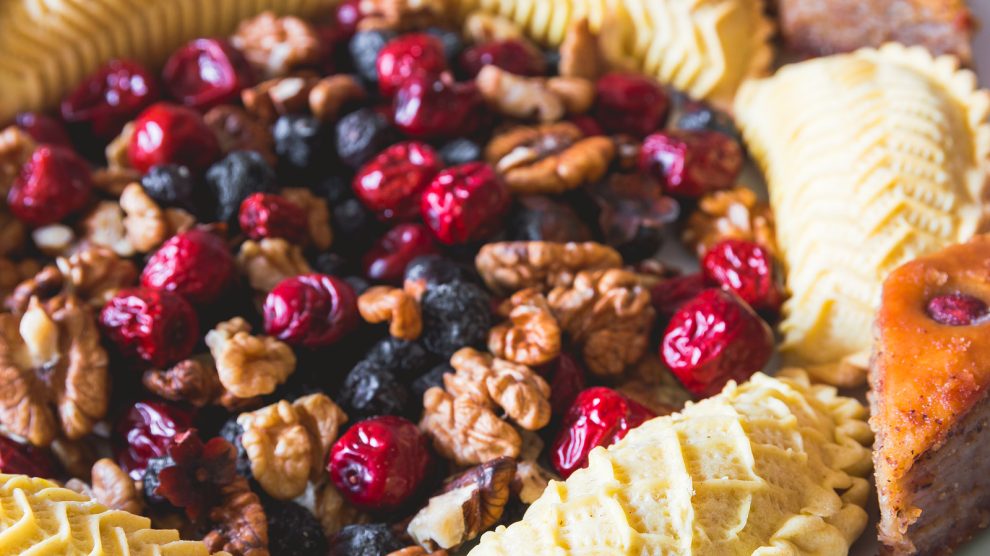While Nowruz is commonly known as Persian New Year, this ancient holiday is celebrated by groups from the Balkans to East Africa to South and Central Asia. We look at how emerging Europe celebrated the holiday and how you can join in the festivities.
Nowruz, Persian for ‘new day’, has celebrated renewal and marked the beginning of spring for at least 3,000 years.
It originated from the Persian religion of Zoroastrianism, known for its fire temples, and many traditions associated with versions of the holiday involve fire. The Persian Empire spread it far outside the Persian lands of modern Iran, Afghanistan, and Tajikistan to the Caucasus, Central Asia, and Middle East.
- The wooden mosques and synagogues of Lithuania
- Postcards from Khujand: Travellers wanted
- In search of flódni: Postcards from the Jewish Quarter
The later Ottoman and Mughal empires adopted components of Persian culture and spread the holiday to the Balkans and modern-day India and Pakistan, respectively. Migrants from Iran brought the tradition to Zanzibar, a Tanzanian island, a thousand years ago and it has been adopted by the locals and adapted into the holiday of Mwaka Kogwa. Diasporas around the world also host large celebrations.
While the holiday is largely secular, Nowruz also has religious significance to Zoroastrians and Baháʼís—for whom it marks the new year—and Sufi, Isma’ili, and some other Shia Muslims—for its association with Imam Ali, the first Shia imam. It has also been banned by Soviet and Turkish governments and integrated into national mythologies of resistance, notably by Kurds for its correspondence with the story of Kawa.
Across traditions, Nowruz is practised as a holiday to be enjoyed with one’s family. Ceaning the home and painting eggs are also prevalent across many countries.
In the Caucasus
Novruz Bayram is prominently celebrated in both Azerbaijan itself and in Iranian Azerbaijan—both of which were historically controlled by Persian empires. Many Azeris in Azerbaijan have Persian names, and Nizami Ganjavi—a 12th century Persian poet from Ganja, Azerbaijan—is an important national figure in Azerbaijan and the Persian world. Azerbaijan calls itself the ‘Land of Fire’, and Baku’s Flame Towers are a national symbol.
Azerbaijani Novruz is similar to Persian Nowruz in many ways, but there are key differences.
While Iranians celebrate Charshanbe Suri or ‘Festive Wednesday’ as the start of Nowruz by jumping over a bonfire, Azerbaijanis celebrate the four Charshanbas or Tuesdays—each devoted to one of the four earth elements—leading up to the start of Novruz.
On the last Charshanba, the eve of Novruz, Azerbaijanis also jump over bonfires, seven times for luck, and children participate in an activity like trick-or-treating in which they go to their neighbours’ homes, knock and leave a small basket, then hide while their neighbour fills it with sweets. Iranian children do the same, sometimes wearing disguises.
Public dancing and festivities in traditional costumes are popular in Azerbaijani cities for Novruz. Azerbaijanis germinate wheat in advance to make samani—green sprouts. Xonça are trays of nuts, sweets, samani, and candles made for the holiday. Shekerbura is a traditional sweet made with almonds or walnuts that is often placed on xonça to symbolise the moon, and people send trays of sweets to their neighbours. Pilav is also usually cooked and consumed in bulk.
Novruz is also celebrated by ethnic Azeris in Georgia, and Newroz and Nowruz are celebrated by Kurds and Iranians in Armenia.
In Central Asia
Nowruz is known by many names across Central Asia: Navroz, Nevroz, and Nauryz. Common throughout the region is sumalak—a sweet paste made from germinated wheat; public singing, dancing, and wrestling; and dastarkhon—a festive table with seven items beginning with the letter “s”. Some Azerbaijanis make similar festive tables.
The sport of buzkashi and country-specific variants are popular across the region around Navroz as well. Men on horseback must move a goat carcass into a goal.
In Tajikistan and Kyrgyzstan, many light candles and fill empty vessels around the home with water to wish for good health. In Kazakhstan, Nauryz kozhe is a dish made from seven ingredients—which may vary but include water, meat, salt, milk or yoghurt, and a grain—to symbolise seven virtues and is given to all guests in a city or village. As in Azerbaijan, Navroz was suppressed in the Soviet era but was practised in secret throughout the 20th century and is enjoying public revival.

In the Balkans
Nevruz in Albania and Kosovo is strongly linked to the Bektashi Sufi order, headquartered in Tirana. For Bektashis, the holiday commemorates the birth of Imam Ali.
Sufi tekkes, or lodges, open for large meals of lamb and dhikr, the repeated chanting of prayers to remember Allah. There are also Bektashi tekkes in Bulgaria, North Macedonia, Greece, and Turkey that similarly celebrate Nevruz.
However, there are large secular celebrations for Albanians of all religious backgrounds as well to mark the coming of spring.
Unlike many news and information platforms, Emerging Europe is free to read, and always will be. There is no paywall here. We are independent, not affiliated with nor representing any political party or business organisation. We want the very best for emerging Europe, nothing more, nothing less. Your support will help us continue to spread the word about this amazing region.
You can contribute here. Thank you.







Add Comment